Search Results for Tag: Ny Alesund
Happy Birthday Koldewey Station
25 years ago, Germany set up its own Arctic research station in the tiny settlement of Ny Alesund, in the Svalbard archipelago.
Today, 11 countries run research stations there. Arctic research is a very international operation, and countries share the facilities available in Ny Alesund, one of the northernmost settlements in the world. Germany and French now run a joint station, known as the AWIPEV station, after the polar institutes of the two countries. The rest is in this picture gallery, which I put together to mark the station’s “silver jubilee”. It combines pictures from several visits I made to the station in recent years and some background about what happens up there in the “high north”.
25 years of German research in the Arctic.

View from Mount Zeppelin over the Kongsfjord, Svalbard, above Ny Alesund research village. (Pic. I.Quaile)
Alpine ice – no more than a memory? New archive of ice cores
Alpine glacier – endangered species? (Pic: I.Quaile)
It was with mixed feelings that I read an article drawn to my attention by a colleague earlier in the week.
“Protecting Ice Memory” is the subject –a description of a new project to create a “global archive of glacial ice for future generations”.
I am generally enthusiastic about all projects concerning ice. The worrying thing is the reason why this project has been deemed necessary.
History melting
“The goal is to build the world’s first library of ice archives extracted from glaciers which are threatened by global warming”. There we have it. Another frightening acknowledgement of the extent and speed of global change.
How sad that our human-induced warming is threatening our ice, especially here in the European Alps, where we do not have as much ice as in some other parts of the globe. How good that we have the technology to save some of it for posterity. How frustrating that while we also have the technology to shift to a zero-carbon economy and stop the ice melting, we are not actually doing it anything like fast enough.
Starting on Monday August 15th and carrying on until early September, an international team of glaciologists and engineers (French, Italian, Russian and American) will be travelling to Mont Blanc, in particular to the “Col du Dome” glacier area, which is 4,300 metres or 14,108 feet up. They will be drilling the first ice cores for the “Protecting Ice Memory” project.
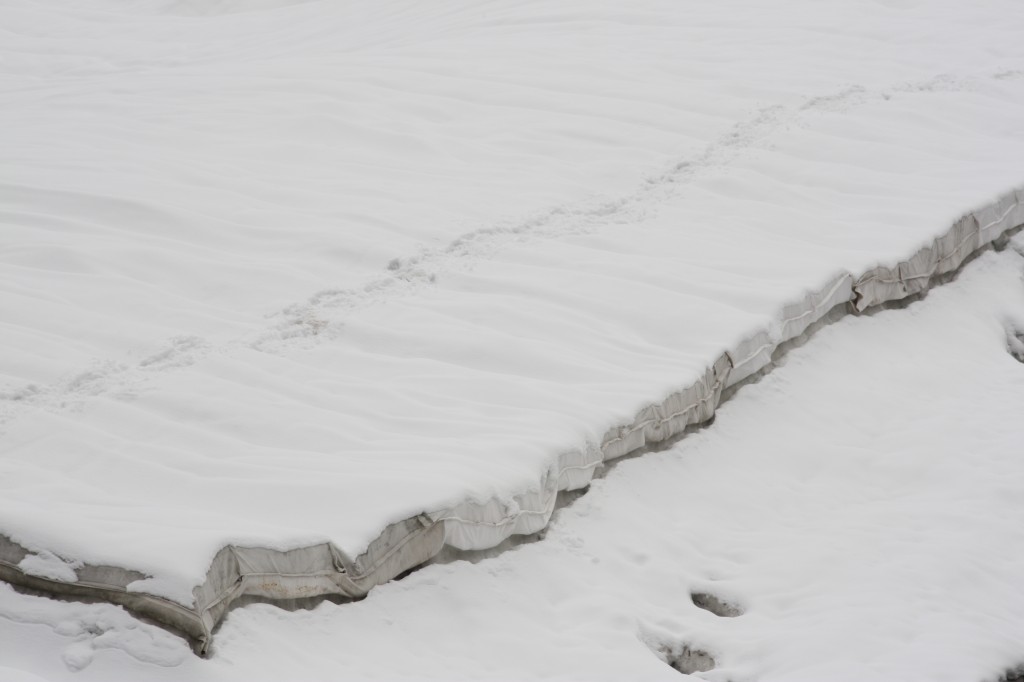
Some glaciers are being covered in summer to stop them melting, this one I saw in Switzerland. Proved ineffective. (I.Quaile)
Saving the cores
The team will be coordinated by Patrick Ginot from the French Research Institute for Development (IRD), working within the UGA-CNRS Laboratory of Glaciology and Environmental Geophysics (LGGE), and Jerome Chappelaz, director of Research at the CMRS and working within ths same laboratory.
The team will be extracting three ice cores each 130 metres long. These will be taken down by helicopter and taken to the LGGE in Grenoble. Clearly they will have to kept very cold during the process.
In 2019 (why only then, I wonder?), one core will be analysed to start a database which is ultimately to be made available to the whole world scientific community.
The other two will be transported by ship to ANTARCTICA. Yes, you read correctly. There, they will be taken on tracked vehicles across the high plateaus to be stored at the Concordia station, which is run by the French Paul-Emile-Victor Polar Institute (IPEV) and its Italian partner, the National Antarctic Research Programme (PNRA)
In the long term, dozens of ice cores are to be stored in a snow cave at -54° Celsius, which the project describes as “the most reliable and natural freezer in the world”.
The Mont Blanc glacier is the first step. The next will be carried out in 2017 on the Illimani glacier in the Bolivian Andes.
Global operation
It seems other countries with access to glaciers are also hoping to join the project, including Germany, Austria, Switzerland, Brazil, the USA, Russia, China, Nepal and Canada. That sounds like a real mega-project.
I have commented often enough here on the Ice Blog on the dwindling ice in my own favourite hiking territory in the German and Swiss Alps. Last week it was the turn of the New Zealand Alps to be the focus of this rather sadly motivated attention.
The scientists who came up with the project had the idea after observing a rise in temperatures on several glaciers. At ten year intervals, they say the temperature near the glaciers on the Col du Dome and Illimani in the Andes has risen between 1.5 degrees and 2 degrees (Those figures sound familiar from somewhere…)
“At the current rate, we are forecasting that their surface will undergo systematic melting over the summer in the next few years and decades. Due to this melting and the percolation of meltwater through the underlying layers of snow, these are unique pages in the history of our environment which will be lost forever”, says the project description.
The scientists compare their project to the Svalbard Global Seed Vault on the Norwegian Arctic island of Spitsbergen. Before I read that part, this very comparison had already come to my mind. I had a rare opportunity to visit that vault a couple of years ago.
Svalbard to Antarctica
But one of the very worrying things in that connection is that even that “secure coldspot” has in turn been affected by permafrost melt – at least at a level close to the surface, which caused damage to the entrance area in the early stages.
Will the Svalbard vault ultimately have to be moved to the even colder Antarctic at some point in the future, one might wonder?
I remember a visit to the Alfred-Wegener Institute in Bremerhaven, Germany’s polar agency. One of the highlights was a look into the laboratory where ice cores are processed. Clearly, these provide invaluable evidence of how our planet and life on it have developed. Climate and environmental archives of a quite unique nature.
“Our generation of scientists, which bears witness to global warming, has a particular responsibility to future generations. That is why we will be donating these ice samples from the world’s most fragile glaciers to the scientific community of the decades and centuries to come, when these glaciers will have disappeared or lost their data quality”, says Carlo Barbante, the Italian project initiator and Director of the Instutite for the Dynamics of Environmental Processes – CNS, Ca’Foscari University of Venice”. What a sobering thought – and a daunting task.
And what an inspiring campaign to rescue what it seems we will not be able to save in time in the natural world.
Projects like this cost a lot of money. It is relying on private sponsors. The current European project has funding. The Université Grenoble Alpes foundation is now running a campaign to fund the Bolivian expedition.
Here’s hoping the money will be forthcoming.
And here’s hoping the international community will speed up efforts to halt global warming before we have to create archives to try to document all the ecosystems, species and habitats we are losing faster than we can count them.
A good haul for polar night team
The Polar Night cruise will come to an end on Tuesday, when the last of the scientists will leave the ship with their samples. I was able to stay until the end of the week, when I left the ship at Ny Alesund with some of the researchers, who were changing places with colleagues. I have left Svalbard, but not the Arctic. More about my current whereabouts later.
A good haul in the polar night
It was interesting to hear that our scientists were happy with their “catch”. Sören Häfke, the German scientist from the Alfred Wegener Institute in Bremerhaven, had more than enough of the little crustaceans calanus finmarchius. When they get back to Germany, they can start their genetic analysis to find how their biological clock works in the dark, Arctic winter. In summer, it is assumed light tells them when to come to the surface to feed and when to go down deeper to avoid predators. But what happens in winter, when it is dark all day long? I will look forward to hearing what they find out.
The Russian team had plenty of interesting sediment samples to look into. The others on board also seemed to be happy with the plankton, crustaceans and small fish they brought in for further research. Marine Cusa was a bit unhappy about the lack of polar cod in the fjord. There seemed to be no shortage of larger Atlantic cod. This is related to the amount of Atlantic water currently present in the fjord, expedition leader Stig Falk-Petersen explained to me. It looks as if Marine will be changing the subject of her Master’s thesis. But I have the feeling it will be no less interesting.
“Life doesn’t stop when the light goes out”
Paul Renaud, a Professor at the University Centre in Svalbard, coordinated the logistics of the expedition on board as well as conducting his own biological research. He is one of those who came up with this Polar Night project. As he sums it up, there is a need to follow up on the few studies done in the last ten years which indicate that there is much more activity in the Arctic ocean in winter than previously thought. This must be triggered by processes other than light. Light is critical for the functioning of the ecosystem, but “it’s not that when the light goes out, everything stops functioning”, Paul told me.
From the samples I was shown under the microscope, I can confirm that there is indeed plenty of life going on. And many of the creatures were carrying eggs.
Climate paradox: easier access – shifting parameters
I asked Paul what was driving the surge of research into the Arctic winter. Firstly, new technology makes it possible to take measurements under the ice, and all year round, when there is no-one up here, he explains. Buoys tethered to the ice are one example. A series of permanent observatories has also been set up in the fjords here, measuring temperature, salinity, oxygen, light, chlorophyll and the movement of plankton. The number of research stations in the region has also increased.
The other major factor is quite clearly climate change. The absence of ice makes it much easier to sail up here, says Paul. Just 20 years ago, this fjord would have been completely covered with ice at this time. Now the sea ice is only found in the far reaches of the fjord. But Paul confirmed my theory that while warming is making access easier, it is also changing the parameters the scientists want to measure. “We are addressing a moving target”, is how he describes it.
Ice, less ice, no ice?
When it comes to forecasting how the Arctic ocean and its ecosystem will react to climate change in the long term, the scientists here say we desperately need more data. The IPCC gives around ten scenarios for how climate in the Arctic could develop, Paul explains. Clearly, if we can rely on predictions that the Arctic will be ice-free in summer from the middle of the century at the latest, that will have certain effects on ecosystems
Some organisms can be very flexible, says Renaud, not breeding for ten years and still continuing their populations. But short-lived organisms that rely on a certain timing of ice or live in the sea ice may well be more seriously affected. But without more information, it is impossible to tell how they will react in the long term.
Along with climate change, increased development is bringing more changes to this once inaccessible region, as discussed many times here on the Ice Blog and in my articles for dw.de. Paul is involved in developing monitoring practices. He stresses this is new territory for economic activities like oil exploration, fisheries, tourism and shipping, and that we urgently need more data on the effect of these activities on sensitive components of the Arctic ecosystems.
Can science keep pace with development?
One question I seek the answer to when I talk to Arctic experts is: can this research keep pace with the speed of the development? The answer depends partly, of course, on how fast that development will be. The Svalbard expert says there will still be sea ice in the Arctic in winter for the foreseeable future, around 100-150 years. That will slow economic activities like oil and gas exploration. “That buys us a little more time”, says the marine biologist. But he sees a huge challenge to identify and monitor the impacts of rapidly growing activities like tourism and shipping.
As I packed up to prepare to leave the Helmer Hanssen at the Ny Alesund research station, Paul was giving his instructions to the scientific team. Some were leaving with me, others staying on for the next section. Coordinating the cleaning of the laboratory and deck areas still well splattered with mud, then the packing up and labeling of the samples and equipment, is a major operation. I thought it better not to whinge about fitting my cameras, recorders and Arctic gear into their bags, which somehow seemed to have shrunk over the past week.
On our last night in dock at Ny Alesund, we were treated (not for the first time this week) to some northern lights, eerily dancing across the black Arctic sky. A wicked wind bit at our faces as we headed once again for the world’s northernmost marine lab. The researchers brought crates of samples. I myself brought a treasure trove of stories, ready to go online. The Arctic in winter is harsh but has a charm of its own. It was fascinating to experience the Polar Night, but I was looking forward to my next Arctic destination a bit further south, venue for the major Arctic conference: Arctic Frontiers.
I am now in Tromso, Norway’s “Arctic capital”, where the sun will be reappearing above the horizon this week and the magic pink, pale blue, silvery grey and white Arctic light is already in evidence for several hours a day.
Ice and mud, glorious mud
Most of the time our ship is out of range of internet connectivity, so this post will be delivered to you from the research base Ny Alesund. My hosts and the station staff were kind enough to arrange a special little boat and a survival suit for a trip through the dark but fascinating polar night. This is only possible because tonight we are still relatively close, with the ship collecting samples in Kongsfjorden, on the north-west side of Spitsbergen. This is an open fjord with a relatively free connection to adjacent shelf. It’s 20 km long, between 4 and 10 metres wide and a maximum depth of 400 metres. This means it is largely influenced by both Atlantic water and Arctic water. It also gets a discharge of fresh water and sediments from adjacent glaciers, which we will be looking at more closely in the next few days. It has been an action-packed day today, watching polar marine night researchers in action. Night research during the day sounds odd, but I can assure you it is certainly dark enough –at any time of day.
Muddy secrets Sergei Korsun from St. Petersburg university and PhD student Olga Knyazeva were out on deck preparing a box corer, a big box-shaped instrument to go down to the seabed and bring up samples of sediment. The teamwork between scientists and crew seems to work brilliantly. The crew operate the lifting and lowering equipment and all sorts of other gear. The scientists collect their samples from it and take them in to the ship’s lab.
“Just a load of mud”, quips Sergei, and there is certainly plenty of it sploshing about in the course of the operation. No wonder there are no outdoor shoes allowed inside.
Olga drains off the water so that only the sediment is left. These two are interested in foraminifera or forams, one-celled organisms. Ice Blog readers may remember I discussed them here some time ago, in connection with research on ocean acidification. German scientists actually wrote a children’s story with Tessi and Tipo, two of these tiny ocean creatures, as the main characters. The focus there was on how increasingly acid seas are dissolving the protective shells of many organisms, especially in cold, Arctic water, where the process is faster. Every creature counts! So why should we be interested in these forams in particular? No question about it, says Olga. There are so many of them, they account for a huge proportion of biomass and we know far too little about what they are up to in the winter. Given their important role in the ecosystem, what they do in winter is something we really ought to know. The season of winter is just too long to be ignored any longer, says Olga. And ultimately, even the tiniest creatures play a role in the global foodweb. Sergei mentions another reason why climatologists and those interested in the history of the planet are so interested in these tiny creatures. They fossilize, so that scientists can use samples from the seafloor to get a record of earth’s history that goes back a very long way.
Inner clocks without daylight? Shortly afterwards, I joined Sören and Lukas from Germany’s Alfred-Wegener Institute for one of their four-hourly net-dropping exercises. For this, a big hatch is opened on the laboratory deck. This brought added excitement as there were a lot of beautifully shaped chunks of ice just floating past. Iceblogger’s delight!
We could also see the hills in silhouette in the background. Clearly there are indeed many shades of “dark”. Seagulls are following us constantly. No doubt they know fish and shrimps are being caught and are always on the lookout for an easy, tasty morsel. In this climate, I don’t blame them. And it is kind of reassuring to have their company, bright in the ship’s lights against the dark sky and sea. The wind felt icy, but the experts up here tell us it is actually relatively mild. Anyway, our two scientists dropped a longish thin net attached to a sort of circular hoop out the hatch, sampling the water.
When it came in, they take samples of small jellyfish, copepods and krill, for a fascinating project to find out about the “biological clock gene”. How can some marine organisms migrate vertically in a 24-25 hour cycle, without light to trigger this? More about that when I’ve interviewed the experts over the next couple of days.
The advantages of winter If you have been waiting for the answer to the question about reproduction in the last blog, I won’t keep you in suspense any longer. Given that the reason is unlikely to be an ideal food supply for the “babies”, some of the scientists on board think the reason could be that there fewer predators about to eat the young, if they arrive in winter. Does that seem plausible? The next post may be a day or two in arriving, as the ship will be out of range from tomorrow onwards. But I promise plenty more to come as soon as we are back in internet range. (How on earth did we live without it?!)
Food and sex in Svalbard’s icy waters?
This is my first post from the Polar Marine Night expedition, from the Kongsfjord in Svalbard.
On the flight from Oslo to Longyearbyen, the main settlement on the island, after a period with a beautiful sunset red strip in the sky, it was dark by half past midday and I realized I had seen my last sunrays for this week.
Flying in to Longyearbyen airport, I could see a white mountain, its dark silhouette outlined by the airport lights. Having been here before in the summer sun, I realized somewhere up there was the famous seed vault where safe supplies of seeds for the world’s food crops are stored under the permafrost, supposedly safe from wars or some other disastrous calamities which might require a “new start” for humanity. I was fortunate enough to visit it on a previous trip a couple of years ago. At the moment, though, the darkness reveals very little of the fascinating landscape.
New winter visitors to Ny Alesund
Our small, robust propeller plane carrying scientists and service staff from the research station, one fellow journalist as well as two young German scientists joining the scientific cruise had us in Ny Alesund late afternoon. It was strange to see the station completely in the dark, although it is not as deserted as it once was in winter, thanks to this Polar Night research. As our driver told us on the way to the harbour, (nothing is far from anywhere else in the small settlement, but hauling luggage across slippery snow and ice in the dark is something I can do without) there are around 60 people on the base, whereas once there was only a skeleton crew of around 13 over the winter.
The French-German station, the Norwegian station and the Chinese building are manned throughout the winter. The others are summer-only stations. Different scientists from around the globe come in and out for the boat trips to investigate marine life in the polar night. This is only the second year of this heightened interest in life in the dark season up here.
Select company of hardy researchers
The RV Helmer Hanssen – named after Amundsen’s navigator to the South Pole – was waiting at the quay. Built as an ice-going fishing vessel, these days the only trawling done here is in the interests of science. Since we left this evening, nets have been deployed at different levels at regular intervals bringing samples of Arctic sea life on board and into the labs. There are 16 students and professors on board, with a crew of 12 to operate the ship, round the clock. It’s an expensive business, says Stig, so they have to make maximum use of the ship time by working to a busy schedule, sleeping in shifts in between. Well, at least we have enough bunks, so we don’t have to economise by sharing those.
Nocturnal goings-on
If I hadn’t done my homework, there were times during the evening briefing by Stig and his colleague Paul Renault, when I might have been tempted to call for an interpreter , with talk of pelagic trawls, the hyper-benthos, grabs, diel vertical migration, epibenthic sleds and more of that ilk. Then comes the high-tech LOPC – a laser optical plankton counter, of course! In case you are not a marine biologist yourself, this is all about getting samples from different layers of water and the seabed to find out about the relatively unknown winter lifestyles and behavior of organisms living in the Arctic ocean. (There was some discussion about supplies of ethanol and formaldehyde, which you must not run out of if you want to take some samples home as a souvenir). It seems amazing, but there is still very little known about marine life in the polar night, because the region was so remote and inaccessible, and because people assumed where there was no light, there would be no biological activity. Now our scientists have discovered (last year was a real “eye-opener”, says Stig) that there is all sorts of activity going on.
It does not surprise me personally that a lot of creatures have to feed all the year round. But what exactly do cod, for example eat? That’s what Marine Cusa wants to find out for her PhD. I met her in the lab, where she was dissecting fish. I had a look inside the stomach of a large specimen of Atlantic cod in the lab.
Not for the faint-hearted, so I won’t go into details. There are even creatures up here who choose to reproduce in this dark season. Now presumably it’s not like with human beings, where there tends to be a rise in the birth-rate after major power cuts in some places. So why would sea creatures choose to have their young in the cold, dark, polar winter? Some of the experts here have some theories – but I’m going to save that for another day.






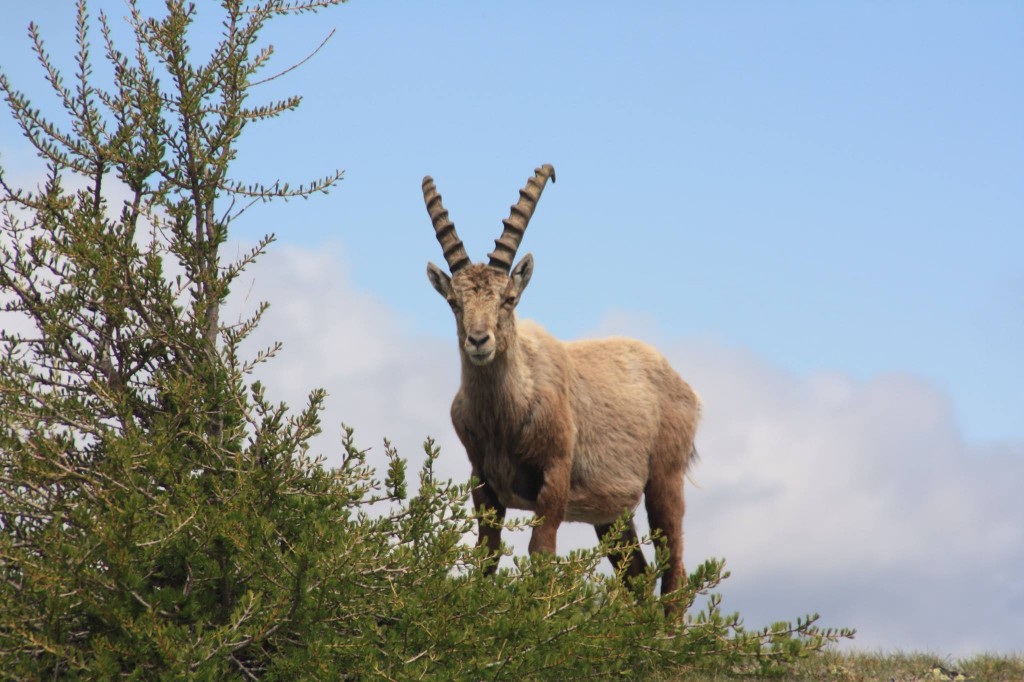
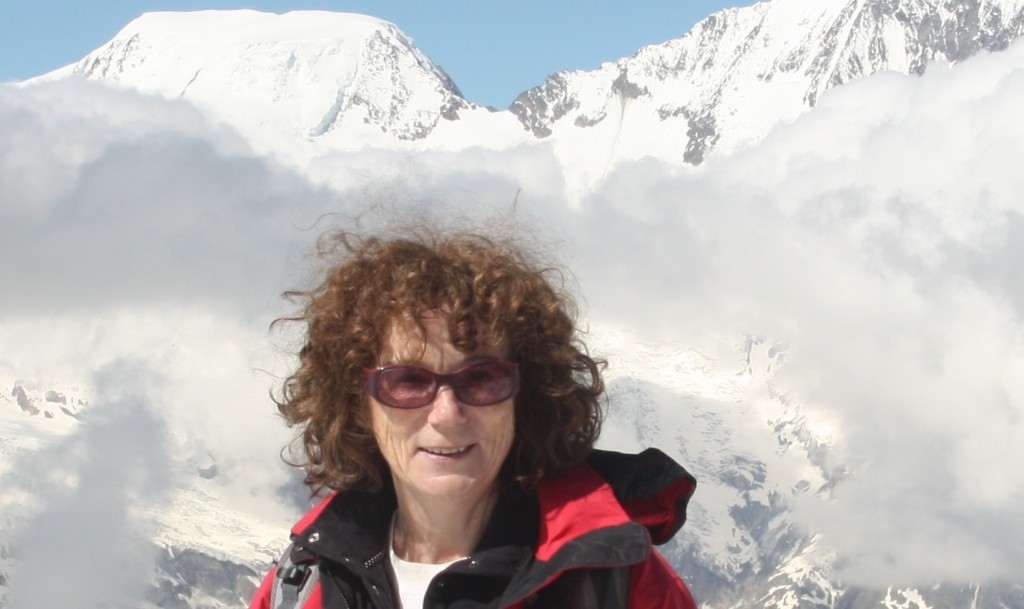




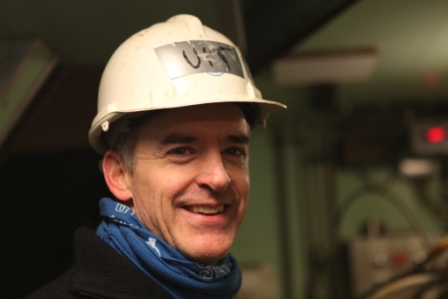
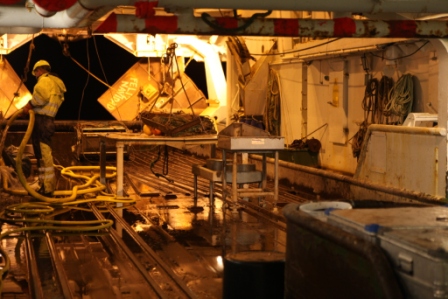

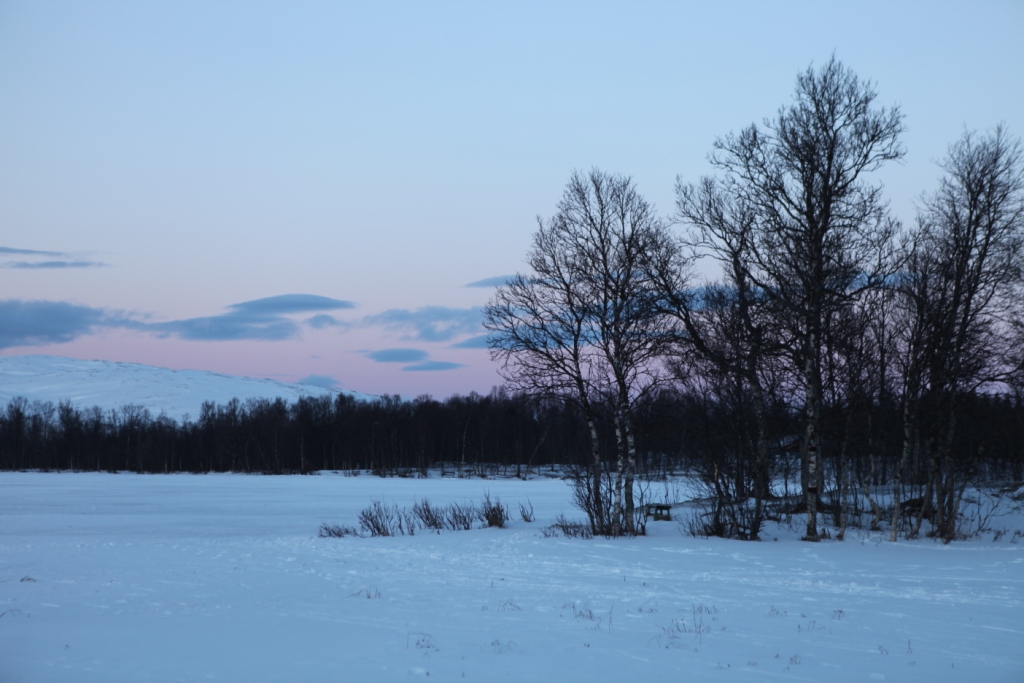
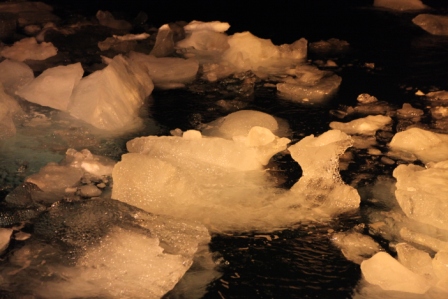



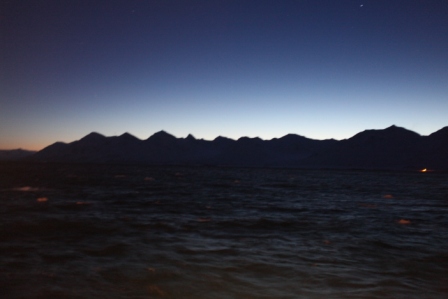
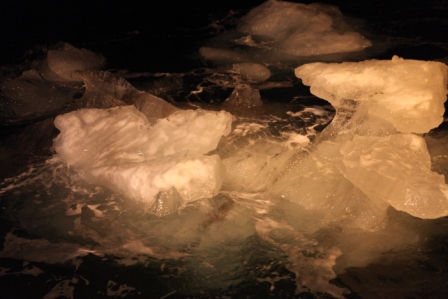

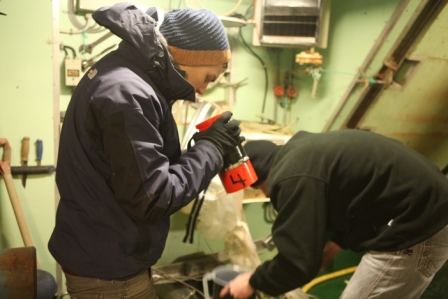
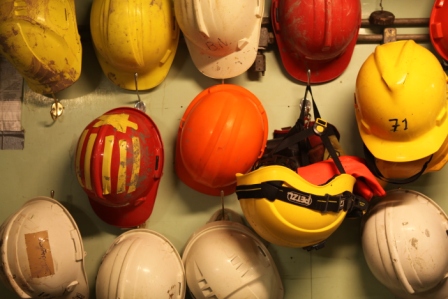


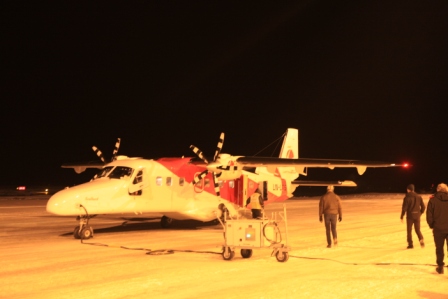
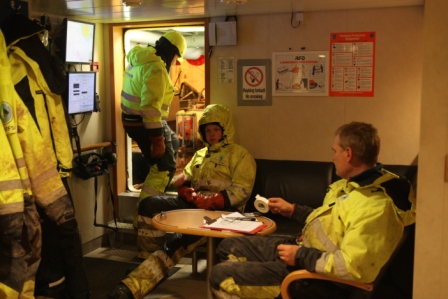
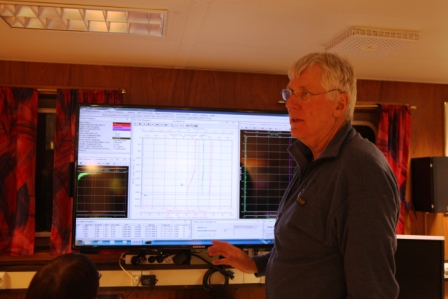
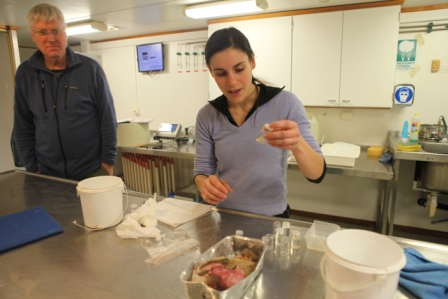
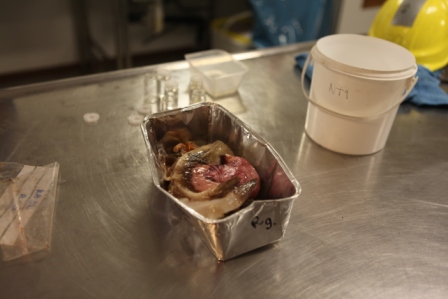
















Feedback